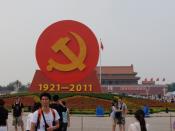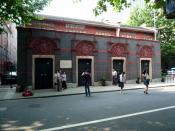China's economic development has been one of the most remarkable series of events in world history. While the nation has experienced many of the same phases as other nations that have moved from rural, agrarian societies to urban, industrial societies, China has had its own unique story.
The development and growth in the last few decades has, in a way, been a reversal of trends that began with the rise of the Chinese Communist Party in the 1920's and 1940's. Communism arose in China to fill the vacuum created after the overthrow of the imperial government by the Nationalist Party in 1911. The country experienced chaos, with many people and ideas struggling for prominence.
The Communist Party strategy was to gain strength and hold power through the support of the rural citizenry, mostly peasants. The bias against urbanization led to strictly controlled internal migration and organization of the rural towns and villages into large communes and agricultural collectives.
Central economic planning dominated peoples' lives, resulting in disillusionment with Communist doctrines. The Party responded with attempts to eradicate Chinese traditions and cultural practices. The repression resulted in a new economic openness and revitalization in the 1970's, which has never stopped.
China has set economic development above all other goals and has dismantled its bureaucracy of centralized planning. Market forces have been allowed to take hold. The result has been tremendous population growth in Chinese cities, along with the accompanying problems involved with the great influx of people in a limited area. Cities that lacked infrastructure and labor sources have seen rural migrations into the cities and surrounding smaller towns. Lacking housing and basic necessities such as plumbing and sewage, these new residents have thrown together make-shift shantytowns. This has led to massive pollution in Chinese rivers and cityscapes. Coupled with...


